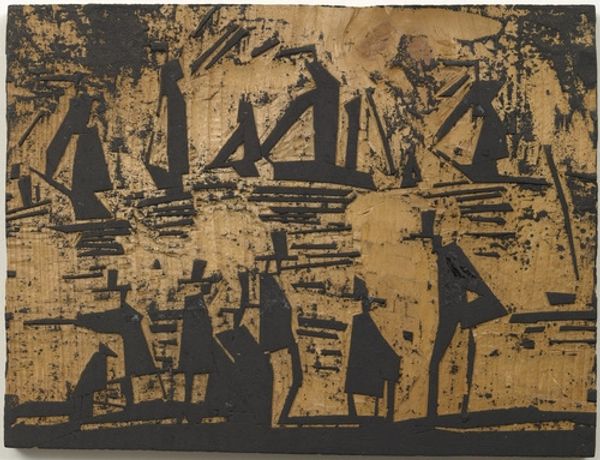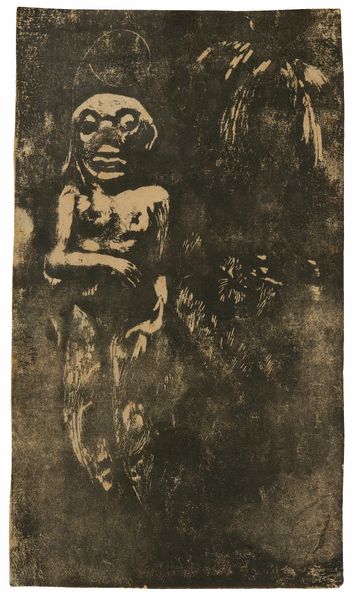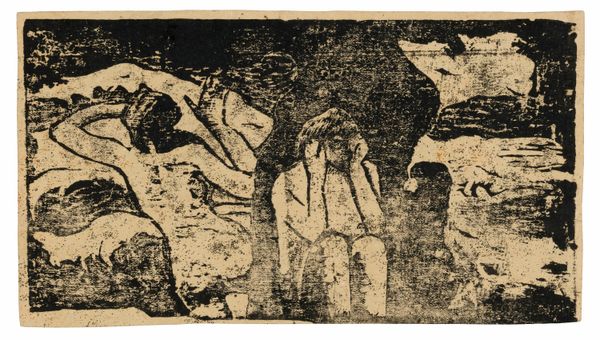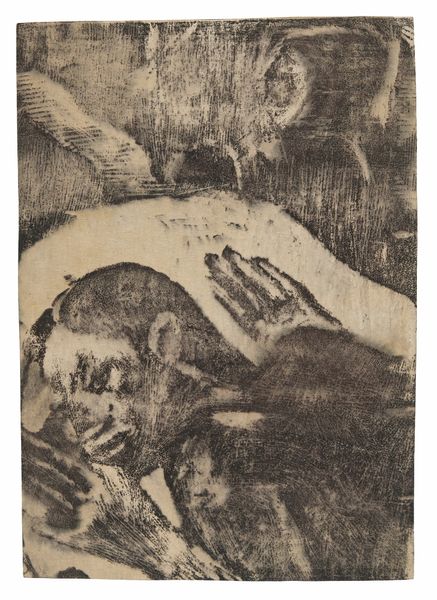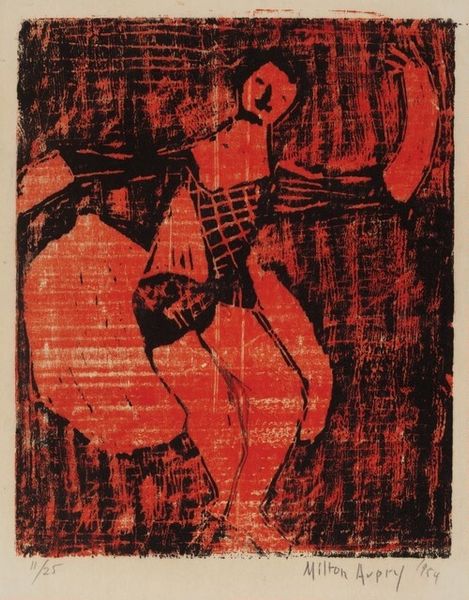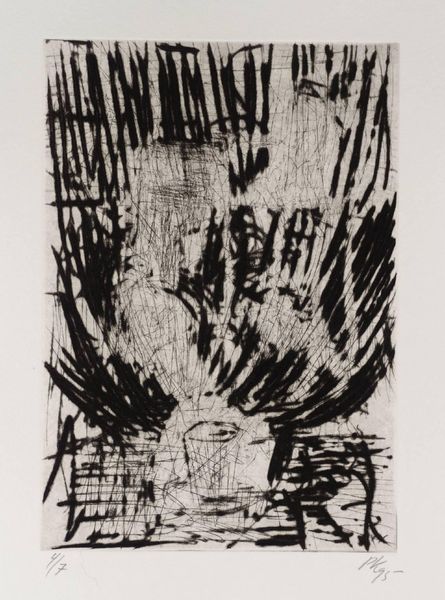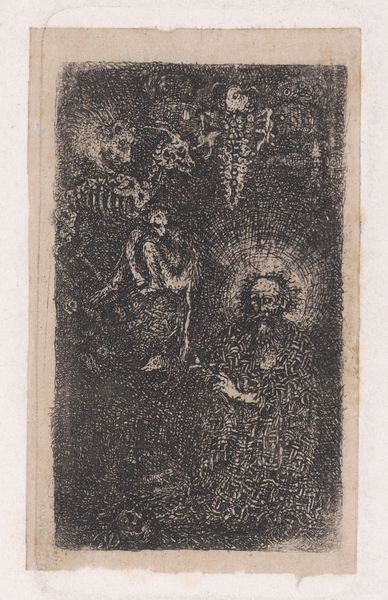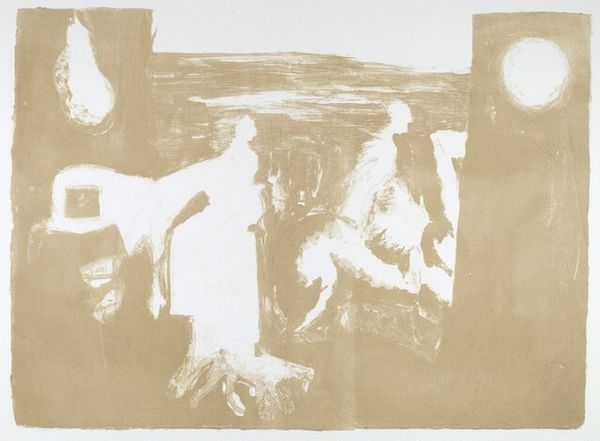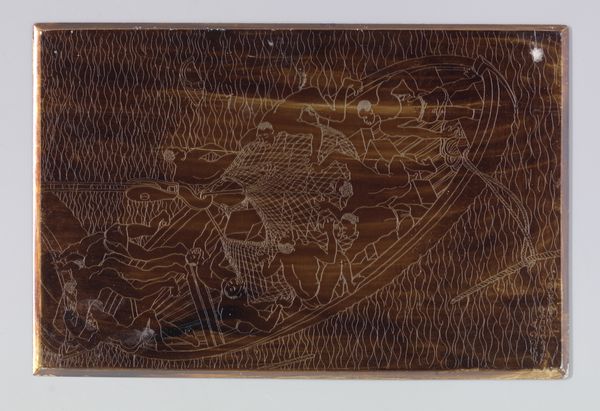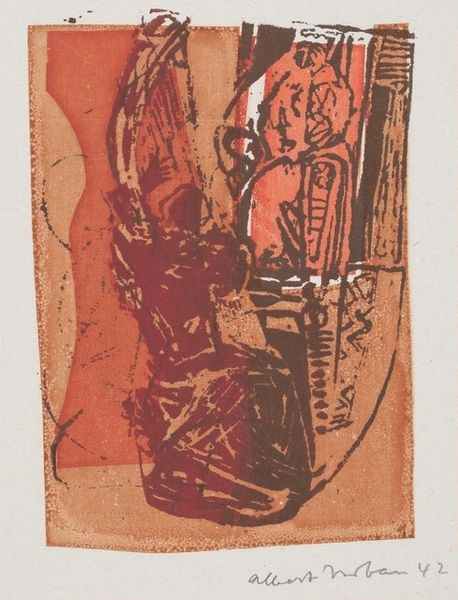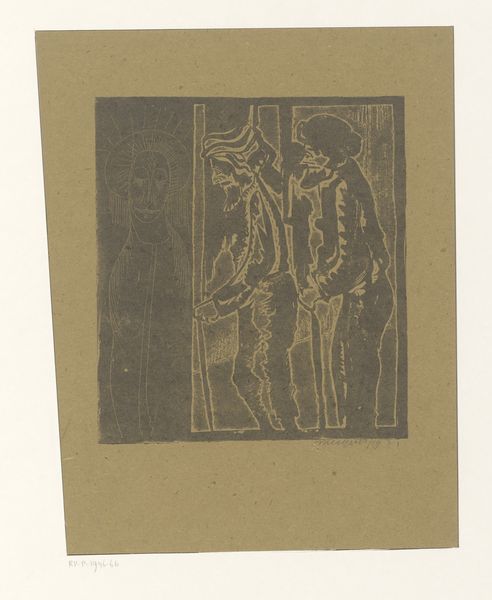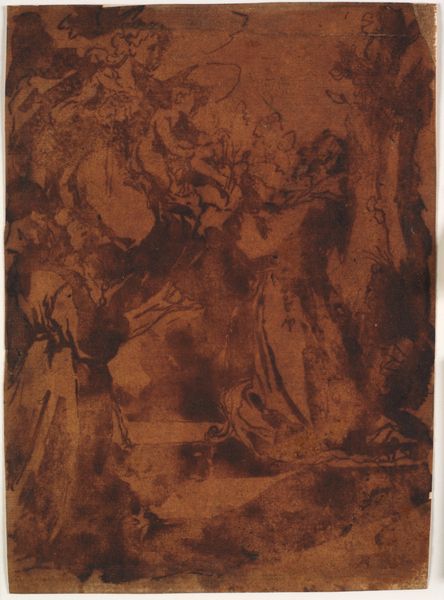
print, paper, woodcut
#
portrait
# print
#
figuration
#
paper
#
woodcut
#
post-impressionism
Dimensions: 88 × 107 mm (image/sheet)
Copyright: Public Domain
This is a woodcut titled "Young Maoris" created by Paul Gauguin. Here, Gauguin used a subtractive process, cutting into the block, leaving only the raised areas to take the ink. It’s a relatively accessible, low-tech approach, especially compared to the painting he’s better known for. The stark contrast of the black ink against the paper emphasizes the bold cuts he made into the wood. Look closely, and you can see the grain of the wood in the lighter areas, reminding us of the material's inherent qualities. Woodcuts like this one were historically used for mass production, a means of disseminating images widely. Gauguin, however, was interested in the effect of making something by hand. He likely appreciated the way the wood’s texture and the process of carving added a raw, expressive quality to the print. By considering the materials and the act of making, we can see how Gauguin blurred the lines between fine art and craft, elevating a humble medium to a powerful form of artistic expression.
Comments
No comments
Be the first to comment and join the conversation on the ultimate creative platform.
